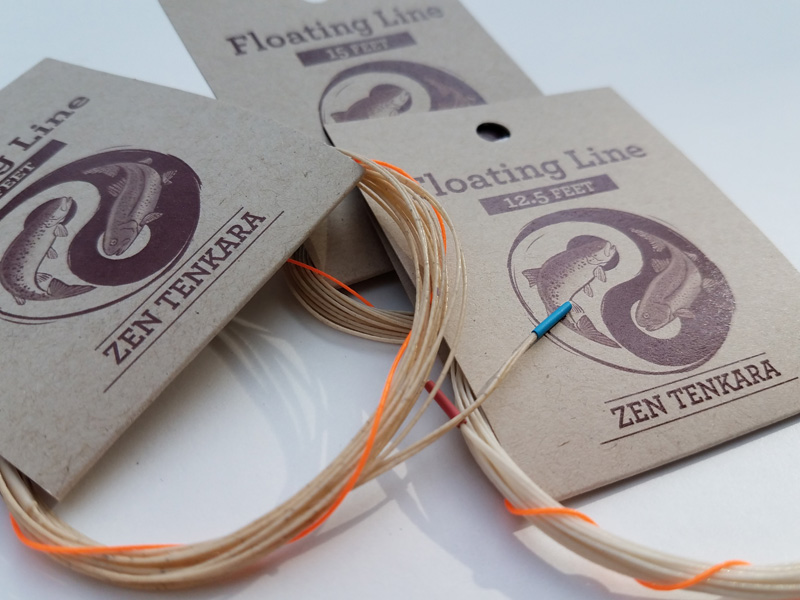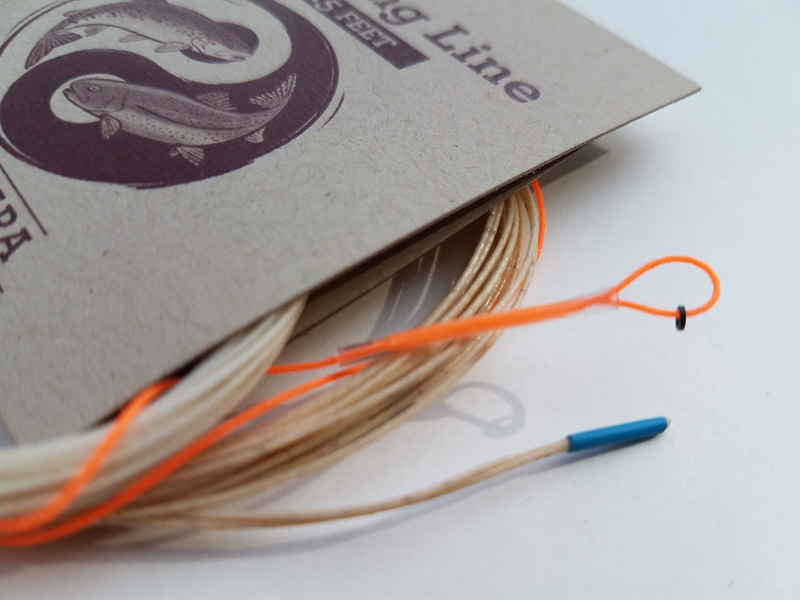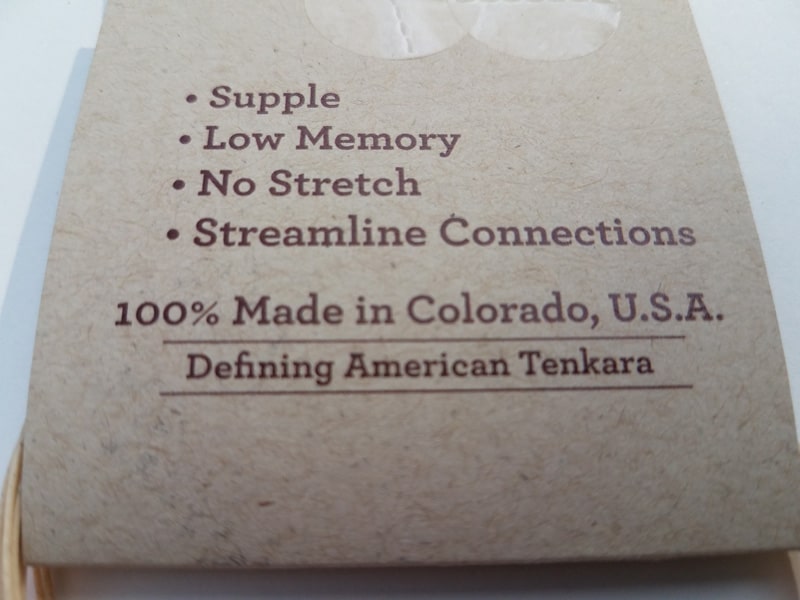Posted by Jason Klass of TenkaraTalk.com on September 12, 2017
 A few weeks ago, I met up with Karin Miller from Zen Flyfishing and she let me try out her new floating line along the banks of the Fall River in Estes Park, CO. I pretty much exclusively fish level fluorocarbon lines; however, there are situations in which I find a floating line works better (more on that in a minute).
A few weeks ago, I met up with Karin Miller from Zen Flyfishing and she let me try out her new floating line along the banks of the Fall River in Estes Park, CO. I pretty much exclusively fish level fluorocarbon lines; however, there are situations in which I find a floating line works better (more on that in a minute).
I’ve been tenkara fishing since 2009 and since then I’ve experimented with a lot of different lines. But I have to say, I was blown away on the first cast with this line. My friend Brian Lindsay was there too and I kept asking for the rod back because I couldn’t get enough of casting this line. It’s hands down one of the easiest lines to cast with an effortless turnover that makes you feel like you’re a tenkara rockstar. Not only is it a thrill to cast, but some of the design features are pure genius …
Technical Features
First of all, I’m not sure what material the main line is made from but I’m assuming it’s PVC-based similar to a regular fly line to give it its floatability. On one end there’s a (Kevlar?) loop to easily attach it to your lilian. But the real genius is in the tip end. It’s an 8-inch section of hi-vis orange for strike detection and at the very end there’s both a loop and a tippet ring. This means that you have the option of attaching your tippet either by a loop-to-loop (handshake) knot OR a clinch knot to the tippet ring! I’ve never seen this on any other line and I think it’s pretty innovative.
From end to end, I can tell Karin put a lot of thought into every detail of the design of this line. It’s currently available in the following lengths: 7′, 11′, 12.5′ and 15′. Some other practical advantages are spelled out on the packaging itself

Applications
I mentioned earlier that sometimes I think a floating line is preferable to fluorocarbon in certain situations. To me, these include …
- High-wind conditions. The greater mass of a PVC line cuts through the wind. And, if you’ve ever tried to maintain a dead drift with a level fluorocarbon line, you know that the wind can make it impossible because it grabs your line and thrashes it around, taking the control away from you. It’s better to have a line that cuts through the wind and keep it on the water to make a good presentation.
- Stillwater. In lakes and ponds, I prefer a floating line. There’s no need to keep your line off the water in stillwaters and I feel like I can make a better presentation.
- Fishing larger flies. Floating lines tend to be able to turn over bigger flies like streamers or weighted flies with more grace whereas with a fluorocarbon line you’re kind of “lobbing” it out there with an ugly cast that just feels terrible.
- Beginners. Again, because of the heavier mass, a line like this is much easier for a beginner to cast that a level line. It almost turns itself over without any effort. I’ve seen plenty of novices get frustrated when they couldn’t get a fluorocarbon line to lay out. But with this line, it’s much more intuitive and will shorten the learning curve of the casting stroke and timing.
- Dry fly fishing in slow waters. There are some places I fish where the water is slow moving and there are no cross currents to create drag, so it’s OK to have your line on the water. In these cases, I like a floating line.
Conclusion
Over the years, I’ve seen a lot of experimentation and innovation in tenkara and in my opinion, the Zen Tenkara Floating Line is one of a few notable hallmarks of the evolution of our sport. It may not end up being your everyday line, but it’s definitely worth keeping in your arsenal when the conditions demand it. You’ll be glad you had it with you.





I think this website contains some rattling good info for everyone : D.
Very helpful info because i would use large keeper kabaris in still water for bass and i am the new guy trying to learn!
Very glad to hear it!
But what is really the meaning of
Mid Weight
Mid-Weight is just that, a general term that indicates it is heavier than the Light line and lighter than the BIG Fusion Lines. Most people do not understand grain weight but if you prefer that information on our Fusion Lines here it is:
Fus Lgt diameter .90mm
15 – 43grn
20 – 59grn
25 – 73grn
Midweight diameter 1.15mm
15ft – 69grn
20ft – 94grn
25ft – 119grn
Big
16ft – 115grn
28ft – 200grn
Nice One